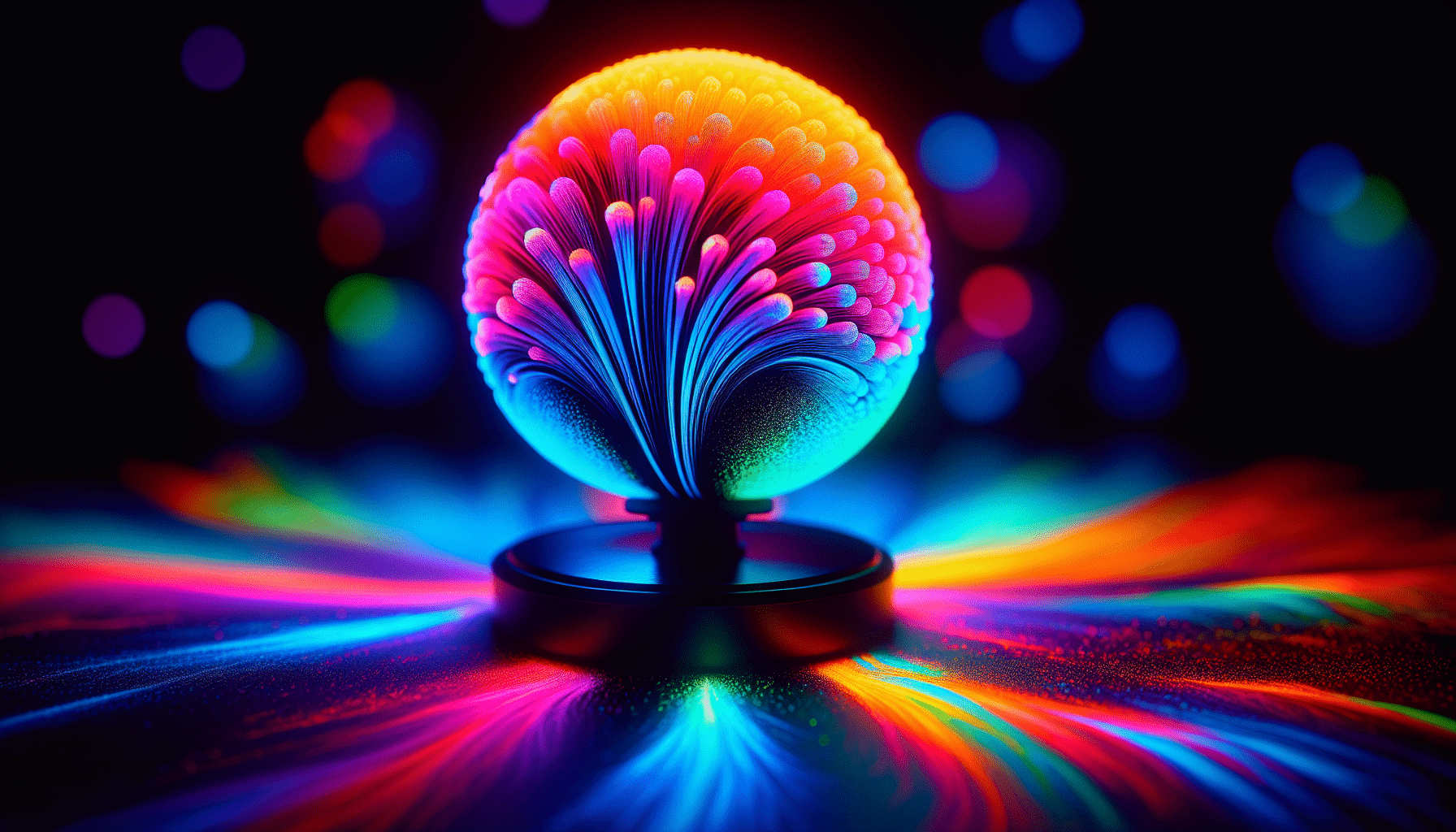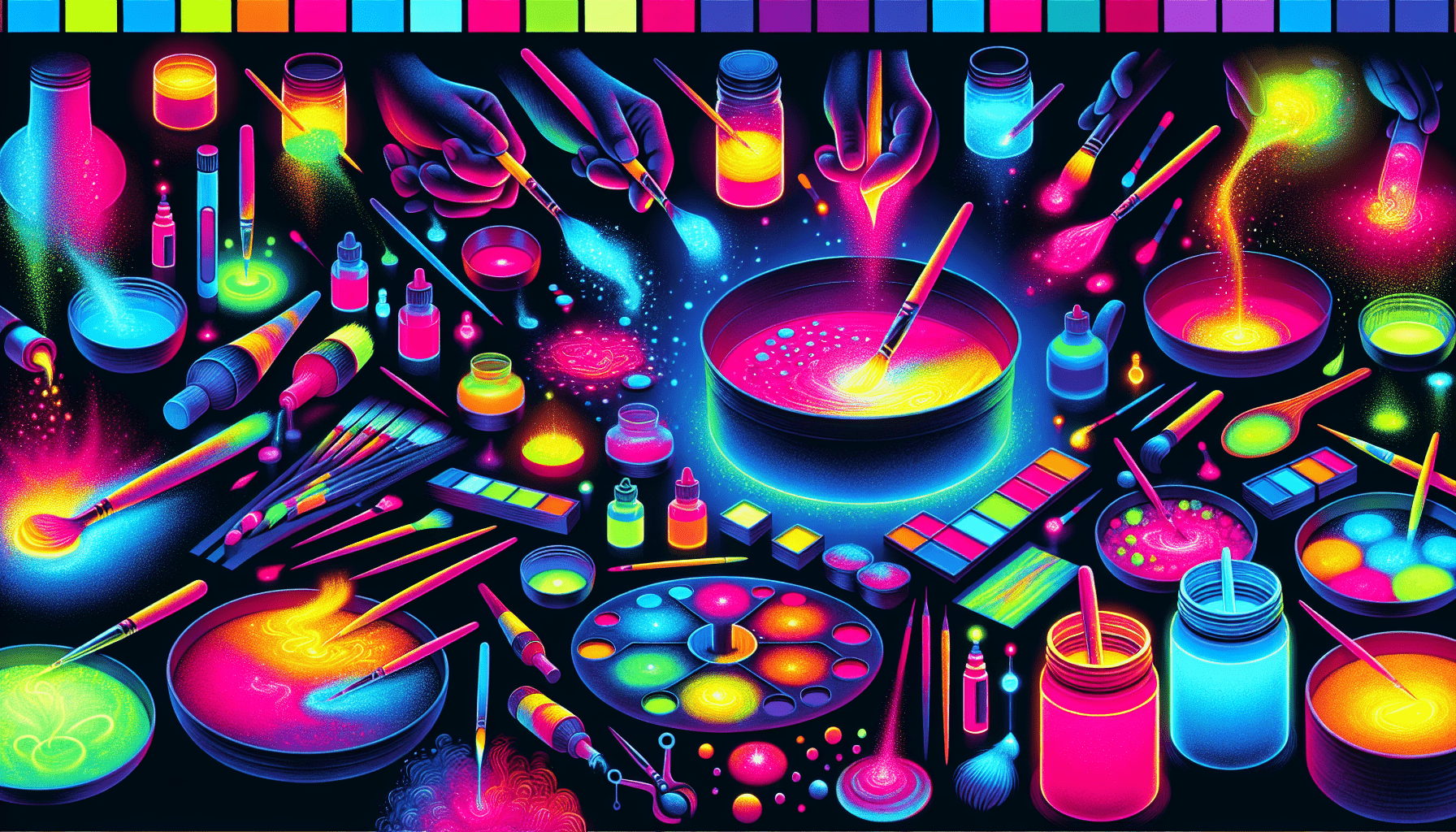Fluorescent paint has long been known for its ability to emit a vibrant glow under ultraviolet (UV) light. However, there may still be some confusion as to whether this paint can also produce a luminous effect in the absence of UV light. In this article, we will explore the fascinating world of fluorescent paint and delve into the question of whether it can truly glow in the dark. Through in-depth analysis and scientific insight, we aim to provide a definitive answer to this commonly pondered query. So, get ready to unveil the secrets of fluorescent paint and discover if it truly possesses the power to illuminate the darkness.

What is Fluorescent Paint?
Definition of fluorescent paint
Fluorescent paint refers to a type of paint that exhibits a vibrant, glowing effect under certain lighting conditions. Unlike regular paint, which simply reflects light, fluorescent paint absorbs and emits light at different wavelengths, resulting in a luminous appearance. This unique characteristic is achieved by incorporating special fluorescent pigments or dyes into the paint formulation, which react to specific lighting conditions to create the striking visual effect.
How fluorescent paints work
Fluorescent paints work based on the principle of fluorescence. When exposed to ultraviolet (UV) light or other sources of high-energy radiation, the fluorescent pigments or dyes present in the paint absorb the incoming light energy. This absorbed energy causes the electrons within the pigments to become excited and move to higher energy levels. However, this excited state is unstable, causing the electrons to quickly drop back down to their original energy level. As the electrons return to their ground state, they release the stored energy in the form of visible light, resulting in the glowing effect characteristic of fluorescent paint.
Different Types of Fluorescent Paint
Water-based fluorescent paint
Water-based fluorescent paint is a popular choice for many applications due to its ease of use, quick drying time, and low toxicity. This type of paint is made by suspending fluorescent pigments or dyes in a water-based binder. Water-based fluorescent paints are typically available in a wide range of colors and can be easily applied to various surfaces, including paper, wood, metal, and plastic. They are particularly suitable for indoor use, such as in art projects, signage, and decorative purposes.
Solvent-based fluorescent paint
Solvent-based fluorescent paint is formulated by dissolving fluorescent pigments or dyes in a solvent, often a volatile organic compound (VOC) such as toluene or xylene. This type of paint offers enhanced durability and resistance to environmental factors like moisture and chemicals. It is commonly used for outdoor applications, such as road signs, safety markings, and industrial coatings. However, it is important to note that solvent-based fluorescent paint can be more toxic and pose health and environmental risks, requiring proper ventilation and careful handling.
Glow-in-the-dark paint
While not strictly a type of fluorescent paint, glow-in-the-dark paint is often associated with fluorescent paint due to its similar visual effect in low-light conditions. Glow-in-the-dark paint contains phosphors that store light energy when exposed to various light sources, including natural or artificial light. When placed in the dark, these phosphors slowly release the stored energy as a subtle glow, often appearing green or blue. This type of paint is commonly used in safety signs, emergency exits, and decorative items.
Characteristics of Fluorescent Paint
Intense and bright colors
One of the distinguishing features of fluorescent paint is its ability to produce intense and vibrant colors. Due to the unique properties of the fluorescent pigments or dyes used, these paints can create hues that appear much more vivid and eye-catching than those achieved with regular paint. The bright and bold colors of fluorescent paint make it an excellent choice for creating attention-grabbing designs and visuals.
UV light requirement
To fully experience the glowing effect of fluorescent paint, it is essential to expose it to an appropriate source of UV light. This can be natural sunlight or artificial UV light, such as blacklight. The fluorescent pigments or dyes in the paint need the energy from the UV light to become excited and emit visible light. Without UV light, the paint will appear dull and lose its glowing effect.
Short-term glowing effect
It is important to note that the glowing effect of fluorescent paint is generally temporary and lasts as long as the UV light source is present. Once the UV light is removed, the paint gradually returns to its original appearance. Therefore, the glowing effect is most prominent in low-light conditions or when the paint is exposed to UV light directly. For sustained glowing, glow-in-the-dark paint or other light-absorbing materials may be more suitable.
Differences Between Fluorescent Paint and Glow-in-the-dark Paint
Fluorescent paint vs glow-in-the-dark paint
While both fluorescent paint and glow-in-the-dark paint can create a luminous effect, there are notable differences between the two. Fluorescent paint relies on absorbing and emitting light under UV light, resulting in an immediate, colorful glow that requires a continuous light source. On the other hand, glow-in-the-dark paint stores light energy and releases it slowly to produce a subtle, long-lasting glow in the absence of light. The glow-in-the-dark effect is more sustained, while fluorescent paint requires ongoing exposure to UV light for its glowing effect.
Mechanism of glowing
In terms of the mechanism behind the glowing effect, fluorescent paint relies on the fluorescence principle, as mentioned earlier, where absorbed light energy is immediately re-emitted as visible light. Glow-in-the-dark paint, however, works based on phosphorescence. The phosphors within the paint absorb and store energy, holding it until a dark environment is encountered. Once in darkness, the stored energy is gradually released in the form of visible light, creating the characteristic glow.
Duration of glow
Another significant difference between fluorescent paint and glow-in-the-dark paint is the duration of their respective glowing effects. Fluorescent paint requires a continuous supply of UV light to maintain its glowing appearance, making it ideal for highlighting objects or areas in real-time. In contrast, glow-in-the-dark paint can emit a subtle glow for an extended period, typically for several hours, without the need for a continuous light source. The duration of the glow depends on the quality of the paint and the amount of light energy it has absorbed.

The Glow-in-the-dark Effect of Fluorescent Paint
Absorption and emission of light
While primarily known for its fluorescent properties, fluorescent paint can also possess a glow-in-the-dark effect, albeit limited in duration. The glow-in-the-dark effect of fluorescent paint occurs when the pigments or dyes within the paint can store some light energy and release it slowly in the absence of light. However, it is important to note that this glow-in-the-dark effect is often less prominent compared to dedicated glow-in-the-dark paints, as fluorescent paint primarily focuses on its fluorescence under UV light.
Duration of glow
The duration of the glow-in-the-dark effect in fluorescent paint typically depends on several factors, including the quality of the paint, the level of light energy absorbed, and the surrounding conditions. In general, the glow from fluorescent paint will gradually diminish over time, usually lasting for a few minutes to a couple of hours. To maintain a more sustained glow, dedicated glow-in-the-dark paints or alternative light-absorbing materials may be a better choice.
Recharging the glow
To recharge or enhance the glow-in-the-dark effect of fluorescent paint, exposure to UV light or other high-energy light sources that excite the pigments is necessary. By providing the necessary light energy, the pigments or dyes within the paint can replenish their energy levels, allowing them to emit visible light again when the ambient lighting conditions change. It is important to note that the glow-in-the-dark effect becomes more pronounced and longer-lasting when the fluorescent paint is exposed to a more intense and prolonged source of UV light.
Suitability of Fluorescent Paint for Dark Environments
Effectiveness in total darkness
In completely dark environments, where the absence of any light source prevails, the glowing effect of fluorescent paint may not be as prominent or noticeable. Fluorescent paint requires a source of UV light to fully exhibit its vibrant colors and fluorescence. Without UV light, the paint’s appearance will resemble that of regular paint, lacking the distinctive glowing effect. In situations where total darkness is expected, alternative light-emitting methods, such as glow-in-the-dark materials or phosphorescent signs, are more appropriate.
Factors affecting visibility
The visibility of fluorescent paint in dark environments can be influenced by several factors. The intensity and proximity of the UV light source are crucial in determining the brightness and range of the glowing effect. Additionally, the color contrast between the fluorescent paint and its surrounding environment plays a significant role in enhancing visibility. Choosing high-contrast color combinations can maximize the visibility of the paint, making it easier to discern and locate objects or areas of interest in the dark.
Applications in various settings
Fluorescent paint finds applications in a wide range of settings, primarily where visibility and attention are important in low-light or dark environments. These include safety markings, emergency signage, theatrical productions, art installations, and even certain automotive applications. Fluorescent paint’s vibrant colors and ability to catch attention make it an effective tool for highlighting hazards, guiding paths, or creating visually striking displays in environments with reduced lighting conditions.
Precautions and Safety Measures
Proper usage and ventilation
When working with fluorescent paint, it is essential to follow proper usage guidelines and ensure adequate ventilation. Some fluorescent paints may contain volatile substances that can release harmful fumes or cause irritation if inhaled or ingested. Always read and follow the manufacturer’s instructions regarding the safe use, handling, and disposal of the paint. Additionally, working in a well-ventilated area or using protective masks can prevent excessive exposure to potentially harmful substances.
Avoiding skin contact
Direct skin contact with fluorescent paint should be avoided. While some fluorescent paints may be non-toxic, others may contain chemicals that can cause skin irritation or allergic reactions. It is advisable to wear protective gloves when handling the paint and wash hands thoroughly after use. If any adverse reactions or skin irritations occur, seek medical advice immediately.
Disposal of fluorescent paint
Proper disposal of fluorescent paint is essential to minimize environmental impact. Many fluorescent paints contain hazardous materials and should not be disposed of in regular waste bins or poured down drains. Check with local authorities or waste management facilities for regulations and guidelines regarding the safe disposal of fluorescent paint. Recycling programs or designated hazardous waste collection sites can often accept fluorescent paint for proper disposal.
Conclusion
Fluorescent paint offers a fascinating visual effect, showcasing intense and vibrant colors under UV light. While primarily known for its fluorescence, some fluorescent paints possess a limited glow-in-the-dark effect due to their ability to store and emit light energy. However, the glowing effect of fluorescent paint is more temporary and requires a continuous light source compared to dedicated glow-in-the-dark paints. Fluorescent paint finds applications in various settings, particularly in environments with reduced lighting, where visibility and attention are critical. It is important to use fluorescent paint safely, follow usage guidelines, and consider proper disposal methods to minimize any potential risks.
Exploring alternatives for glowing effects
While fluorescent paint provides a striking visual effect, those seeking sustained or enhanced glowing effects in the absence of light may explore other alternatives. Glow-in-the-dark paints, which rely on phosphorescent properties rather than fluorescence, can emit a subtle and long-lasting glow in the dark. Additionally, other light-absorbing materials or specialized luminous products may offer unique solutions for creating captivating glowing effects. By considering different options, individuals and businesses can choose the most suitable method to meet their specific needs and desired visual impact.



